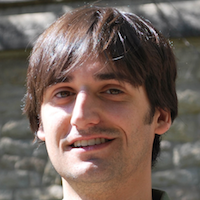
Why do we do what we do?
This is the question at the heart of this month’s ALiEM Book Club selection. Drive 1 , by author Daniel Pink, discusses the history of motivational theory before provocatively making the case that we’re doing it wrong. He argues that having met our base desires (food, drink, sex), a reliance on extrinsic motivators (reward and punishment) will stifle intrinsic motivation and prevent us from functioning at our highest capacity. The three features described for optimizing intrinsic motivation are:
- Autonomy: control over task (what we do), time (when we do it), team (who we do it with), and technique (how we do it)
- Mastery: the desire to get better at what we do using a mindset of improvement and working through challenges of appropriate difficulty
- Purpose: being part of a cause that is greater and more enduring than ourselves
Live Google Hangout: Feb 21, 2014
Medical schools admit the brightest and most accomplished students they can find. Each privileged cohort is composed of goal-directed individuals who do not struggle with motivation. And yet, when they walk through the ivory doors of the modern medical education institution they are greeted by a system that stifles intrinsic motivation. Autonomy is compromised as the “task, technique, timing and team” of learning are removed from the learner’s control. Instead of working towards Mastery, learners are shuffled from system to system after multiple choice exams. Their purpose quickly shifts from idealistic goals of helping others to matching to their preferred residency program. With shifts being made towards active learning modalities such as the Flippped Classroom (as discussed by Javier Benitez in this recent post and last month when the ALiEM Book Club discussed The One World Schoolhouse), an understanding of medical student motivation is more important than ever.The Current Medical School System
The Current Physician Practice Environment
After years of sacrifice and dedication, physicians begin working in a system that has the potential to foster intrinsic motivators. They have more autonomy than ever before, have been trained to be masters in a particular area of medicine, and generally have the flexibility to work at an organization that shares their purpose. However, the return of these intrinsic motivators is met with increasingly strong extrinsic motivators. There are few better examples of an if-then reward structure than the fee-for-service model of remuneration. Despite the potential benefits of alternative funding plans in academic centers, the publish-or-perish promotion system creates the same problems.
Book Club Discussion Questions
The pictures that I painted above of medical education and professional practice were intentionally dismal. Certainly, there are many examples of medical schools and physician practice models that foster intrinsic motivation. It is these stories and ideas that I hope we can focus on in the following discussion.
- How would you change medical education to foster intrinsic motivation?
- How would you change physician practice to foster intrinsic motivation?
This blog post was originally published on Feb 14, 2014. It was changed to Feb 21 after airing of the Live Google Hangout.
Author information
The post ALiEM Bookclub: Drive – Synopsis and Discussion appeared first on ALiEM.

